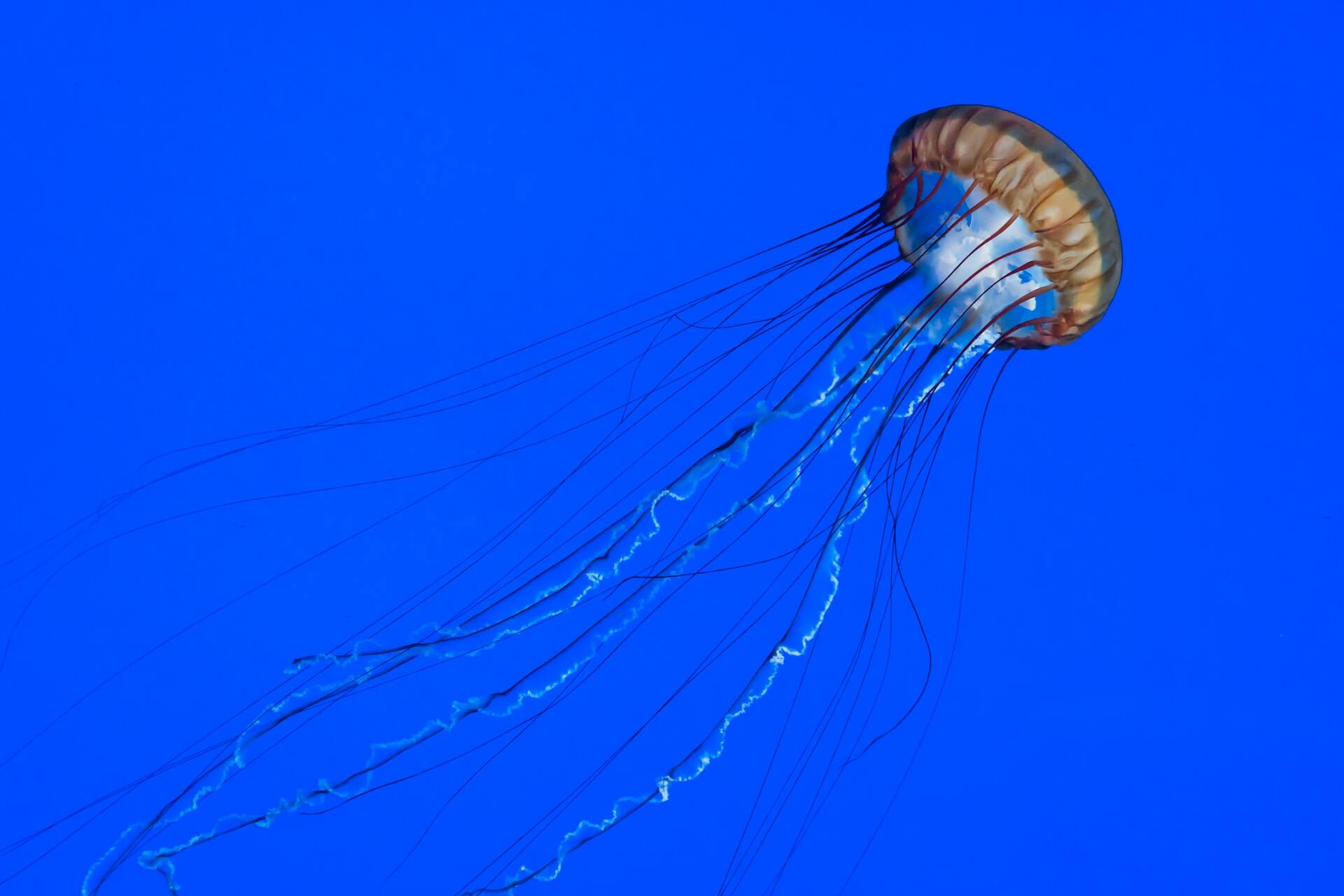You’re enjoying a peaceful day at the beach, the sun warming your skin, the smell of salt in the air, the soft rustle of waves lapping at the shore. Suddenly, your gaze is drawn to a sight just off the coastline.

A group of dolphins, with their sleek bodies and playful demeanor, have decided to make an appearance. As they leap and frolic in the water, you find yourself wondering – why do dolphins swim so close to the shore?
Dolphins are often drawn to shallow waters due to the abundance of food sources and the safety it provides from predators. It also gives dolphins an opportunity to engage in various social activities and interactions with other species, including humans. Additionally, environmental factors such as seasonal variations, water temperatures, and tidal conditions influence their proximity to the shore.
Keep reading on, as we uncover the reasons behind this fascinating behavior of dolphins.
Why Dolphins Swim Close to Shore: An Overview
Dolphins are fascinating creatures that often swim close to shore, capturing the attention of beachgoers and marine enthusiasts. You might be curious about why they come so close to the shoreline. One reason for this behavior is that dolphins are social animals, and they swim near shores to find food and interact with other dolphins.
Some dolphins may approach the shore due to old age, illness, or injury, as they become too weak to swim back out into deeper waters and get trapped on the shoreline. In such cases, they might seek refuge in shallow waters, as they are unable to make it back out to sea and cannot get back onto land, so they eventually die from starvation or predation.
Dolphin’s Habitat and Environment
Let’s explore the different habitats that dolphins call home. Although they are often associated with the ocean, there are also freshwater species of dolphins found in rivers throughout South Asia and South America. Amazingly, dolphins live in every ocean on Earth, with species ranging in size from the massive orca at 30 feet long to Hector’s dolphin, which is just 4.5 feet in length.
The location and geography play a significant role in determining where dolphins live and how they interact with the environment. Some creatures, like the freshwater dolphins, are uniquely adapted to life in rivers. Coastal dolphins, on the other hand, are more likely to be influenced by the coastline’s physical features, such as the availability of food or protection from predators.
Diet and Prey Hunting Near the Shore
When it comes to their diet, they mainly feed on fish and squid. Their food preferences depend on the type of dolphin, their location, and the availability of prey. As a result, you might observe dolphins swimming close to the shore to find food.
When hunting near the shore, dolphins display a variety of fishing techniques that show their adaptability and intelligence. One such method is known as strand feeding, where dolphins chase fish up onto the shore, risking getting stranded themselves. It’s a perilous technique, but these marine mammals still take the risk for the chance to catch their prey.
Another reason dolphins come close to shore is that the waves and currents there are much calmer than in deep water, allowing them to swim without being disturbed by the waves. This helps the dolphins concentrate on hunting and makes it easier for them to catch fish.
Dolphins are also known to work in teams to trap their prey. For example, bottlenose dolphins in shallow bodies of water cooperate to drive fish towards the shore, where it’s easier to catch them.
Social and Group Activities Near Shore
Dolphins are known for their social behavior and often swim close to the shore to engage in various group activities. When you observe dolphins near the shore, you’ll probably notice they tend to travel in groups, known as pods. These pods facilitate playful interactions, friendly exchanges, and protective behavior among the dolphins.
Being in a pod helps dolphins protect each other and their young from potential predators. As you watch them swim, you might see how their groups work together to stay safe. While dolphins are generally friendly creatures, they can also be quite protective of their pod members.
When dolphins come closer to the shore, the calmer waves and currents allow them to play and socialize more easily. Their natural curiosity often drives them to approach people or boats, showing off their playful side as they swim, jump, or spin around.
As a friendly and social animal, dolphins also engage in various group activities near the shore to find food. In a cooperative effort, they’ll surround schools of fish, driving them towards the shallow water, where it’s easier to catch their prey.
Interaction with Other Species Near Shore
When you observe dolphins swimming close to shore, you’ll also see them interacting with various other species, like whales, orcas, pilot whales, and even boats and humans. As naturally curious and friendly animals, dolphins are known for forming strong bonds and engaging in playful behaviors with other creatures near the shoreline.
One interesting aspect is how dolphins sometimes form unprecedented alliances with other dolphin species, like in the Bahamas where they forage and play together. This unique social network strengthens their bond and protection against potential threats, such as predators or environmental risks.
Boats and humans near the shore also offer unique opportunities for interaction. Dolphins find boats fascinating, often riding the waves created by their movement. In return, humans get to watch the acrobatic displays of these highly skilled swimmers.
Whales, especially larger species like orcas and pilot whales, share the same marine environment with dolphins. Although orcas, also known as killer whales, are known to prey on smaller marine mammals, they usually don’t pose a direct threat to dolphins near the shore. Instead, the marine mammals coexist, finding food and exploring together in their shared ecosystem.
As curious and friendly animals, dolphins are also known to communicate with other species, such as harbor porpoises. This communication can be observed in places like Scotland’s Firth of Clyde, where a dolphin named Kylie was observed interacting with nearby harbor porpoises.
Anatomy Influencing Near Shore Activities
Dolphins have evolved over 10 million years, adapting their anatomy to better suit marine life. The size and shape of their bodies allow them to easily navigate both deep and shallow waters. Their streamlined shape is designed for efficient swimming, so you can expect them to be confident near the shore as well.
All mammals, including dolphins, need to breathe air. Dolphins have a blowhole at the top of their heads, which they use to inhale and exhale, even when they are swimming close to shore. Don’t be surprised if you see them come up for air – it’s an essential part of their biological makeup.
Additionally, thanks to their unique anatomy, dolphins are incredible swimmers. They have powerful flippers that enable them to leap out of the water or dive deep down when hunting for food. Interestingly, their ability to dive serves them well, regardless of whether they are in deep ocean or near the shore.
Their tails, or flukes, act like powerful propellers that shoot them through the water at impressive speeds. This swimming skill allows them to confidently navigate both deep and shallow water, which is one reason why they can be seen swimming close to shore.
Sounds and Communication Near Shore
Dolphins use a variety of vocalizations like whistles and squeaks to communicate with one another. Each dolphin has its unique whistle, which functions like a name, allowing them to identify each other in their pod. When dolphins are near the shore, they might increase their vocalizations due to the higher noise levels in these areas.
Echolocation is another critical aspect of dolphin communication, where they emit clicks and listen to the returning echoes to locate objects and prey. It’s like a built-in sonar system that helps them navigate through their watery environment with ease, especially in shallow waters close to shorelines, where there can be more obstacles like rocks and seaweed.
However, the sound they produce can be affected by human activities and ambient noise. Noise pollution like boat traffic and underwater construction near the coast can interfere with their communication and echolocation abilities. This means dolphins might need to adjust their calls or use different methods to navigate and communicate effectively near the shore.
Health and Safety Factors
Another reason you might see dolphins near the shore is that some of them could be old, sick, injured, or disorientated. As they age or suffer from health issues such as diseases and parasites, their ability to swim well decreases, and they may find refuge in shallow waters where they can rest easier.
Dolphins experiencing health problems may also be more susceptible to stranding themselves on the beach. If you encounter a stranded dolphin, keep in mind that they are wild animals, and getting too close could pose risks to both you and the dolphin.
Keep a safe distance and report the stranded animal to local authorities or wildlife organizations. It is illegal to feed or harass wild dolphins, so always admire them from a distance for their safety and yours.
Dolphin populations resting near the shore may also be affected by human activities, such as swimming and boating. In some locations, regulations limit the interaction between humans and dolphins to ensure the animals’ well-being.
For instance, certain areas may be off-limits to swimmers or have restricted access for boats with outboard motors, while designated hours may be set for swimming and diving with the dolphins in specific zones.
Threats and Conservation Efforts
Dolphins, being warm-blooded creatures just like humans, are highly adaptable to various aquatic environments. Unfortunately, they face numerous threats in the wild. One of the significant challenges to dolphins is climate change, which affects their migration patterns, food availability, and reproduction.
When dolphins interact with humans, they may encounter additional dangers. As they swim close to shore, they may accidentally approach boat propellers, sustaining serious injuries. Furthermore, when dolphins become accustomed to human presence, they may ingest human food like beer, pretzels, and candy, which can lead to health complications.
Another significant threat to dolphins is accidental entanglement. As they swim near the shore, they may become trapped in fishing nets, especially the fine-mesh gill nets, which they can’t detect underwater. This bycatch problem often results in injury or death for the dolphins.
Friendly conservation efforts are in place to protect dolphins and their habitats. One critical step you can take is to admire dolphins from a safe distance, refraining from feeding them or approaching them too closely with boats.
Organizations like the World Wildlife Fund work to improve fishing practices, promote sustainable use of marine resources, and raise public awareness about the importance of protecting these unique creatures.
By practicing responsible behavior around dolphins and supporting conservation efforts, you contribute to a safer environment for these amazing animals, ensuring they can thrive in their natural habitat despite the Earth’s changing climate.
Sources:
- https://www.treehugger.com/why-whales-and-dolphins-beach-themselves-1203590
- https://www.treehugger.com/are-dolphins-endangered-5097008
- https://content.dolphinsplus.com/dolphin-facts-everything-you-need-to-know
- https://phys.org/news/2021-12-dolphins-coast.html
- https://www.thoughtco.com/facts-about-dolphins-129800
- https://www.nationalgeographic.com/animals/article/these-amazingly-complex-behaviors-make-dolphins-master-hunters-
- https://www.nationalgeographic.com/animals/article/dolphin-speaks-porpoise-communicates-with-other-species
- https://www.smithsonianmag.com/smart-news/prep-their-next-meal-dolphins-punt-thrash-and-trap-their-prey-180973555/
- https://www.fisheries.noaa.gov/species/atlantic-spotted-dolphin
- https://www.fisheries.noaa.gov/national/marine-life-viewing-guidelines/protect-wild-dolphins-admire-them-distance
- https://oceantoday.noaa.gov/dolphinanatomy/
- https://www.newscientist.com/article/mg22730313-200-two-dolphin-species-band-together-to-form-unprecedented-alliance/
- https://www.umces.edu/content/growing-noise-ocean-can-cause-dolphins-change-their-calls
- https://www.science.org/content/article/swimming-dolphins-good-idea
- https://www.worldwildlife.org/species/hector-s-dolphin






